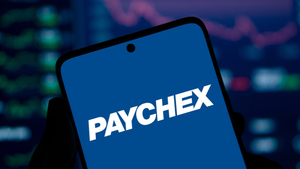
Building products manufacturer Simpson (NYSE: SSD) beat Wall Street’s revenue expectations in Q2 CY2025, with sales up 5.7% year on year to $631.1 million. Its GAAP profit of $2.47 per share was 9.1% above analysts’ consensus estimates.
Is now the time to buy Simpson? Find out by accessing our full research report, it’s free.
Simpson (SSD) Q2 CY2025 Highlights:
- Revenue: $631.1 million vs analyst estimates of $599.4 million (5.7% year-on-year growth, 5.3% beat)
- EPS (GAAP): $2.47 vs analyst estimates of $2.26 (9.1% beat)
- Adjusted EBITDA: $159.9 million vs analyst estimates of $152.4 million (25.3% margin, 4.9% beat)
- CEO: "we delivered year-over-year sales growth in a challenging housing market"
- Operating Margin: 22.2%, in line with the same quarter last year
- Market Capitalization: $6.93 billion
"Our results underscore the strength and resilience of our business model, as we delivered year-over-year sales growth in a challenging housing market," said Mike Olosky, President and Chief Executive Officer of Simpson Manufacturing Co.,
Company Overview
Aiming to build safer and stronger buildings, Simpson (NYSE: SSD) designs and manufactures structural connectors, anchors, and other construction products.
Revenue Growth
A company’s long-term sales performance is one signal of its overall quality. Any business can put up a good quarter or two, but the best consistently grow over the long haul. Thankfully, Simpson’s 14% annualized revenue growth over the last five years was exceptional. Its growth beat the average industrials company and shows its offerings resonate with customers.
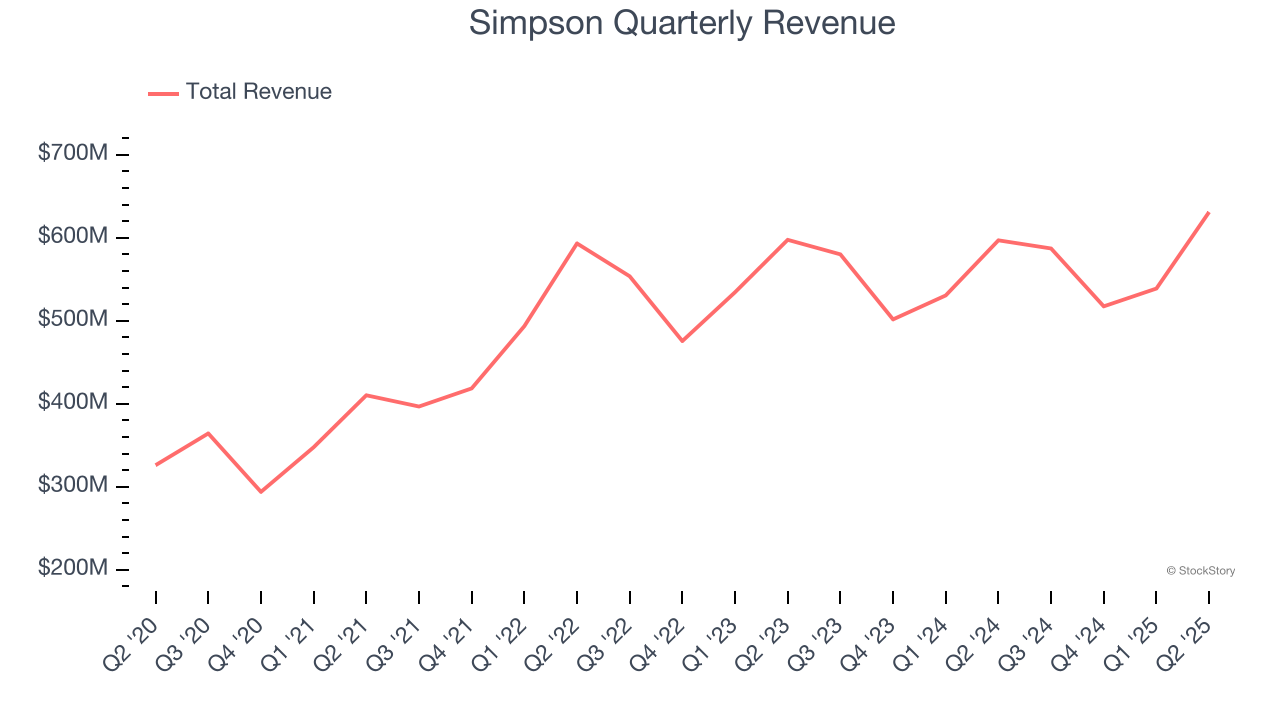
Long-term growth is the most important, but within industrials, a half-decade historical view may miss new industry trends or demand cycles. Simpson’s recent performance shows its demand has slowed significantly as its annualized revenue growth of 2.6% over the last two years was well below its five-year trend. 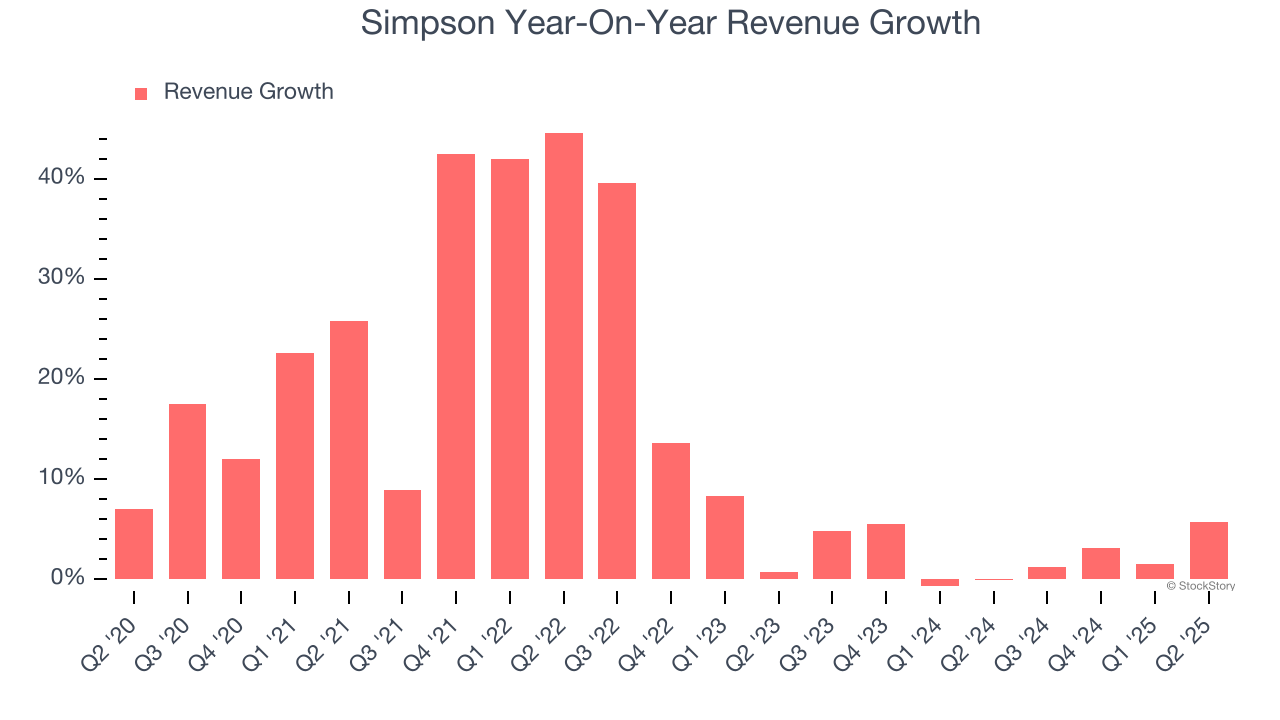
This quarter, Simpson reported year-on-year revenue growth of 5.7%, and its $631.1 million of revenue exceeded Wall Street’s estimates by 5.3%.
Looking ahead, sell-side analysts expect revenue to grow 4.4% over the next 12 months. While this projection suggests its newer products and services will fuel better top-line performance, it is still below average for the sector.
Today’s young investors won’t have read the timeless lessons in Gorilla Game: Picking Winners In High Technology because it was written more than 20 years ago when Microsoft and Apple were first establishing their supremacy. But if we apply the same principles, then enterprise software stocks leveraging their own generative AI capabilities may well be the Gorillas of the future. So, in that spirit, we are excited to present our Special Free Report on a profitable, fast-growing enterprise software stock that is already riding the automation wave and looking to catch the generative AI next.
Operating Margin
Operating margin is one of the best measures of profitability because it tells us how much money a company takes home after procuring and manufacturing its products, marketing and selling those products, and most importantly, keeping them relevant through research and development.
Simpson has been a well-oiled machine over the last five years. It demonstrated elite profitability for an industrials business, boasting an average operating margin of 21.5%. This result isn’t surprising as its high gross margin gives it a favorable starting point.
Looking at the trend in its profitability, Simpson’s operating margin decreased by 1.6 percentage points over the last five years. This raises questions about the company’s expense base because its revenue growth should have given it leverage on its fixed costs, resulting in better economies of scale and profitability.
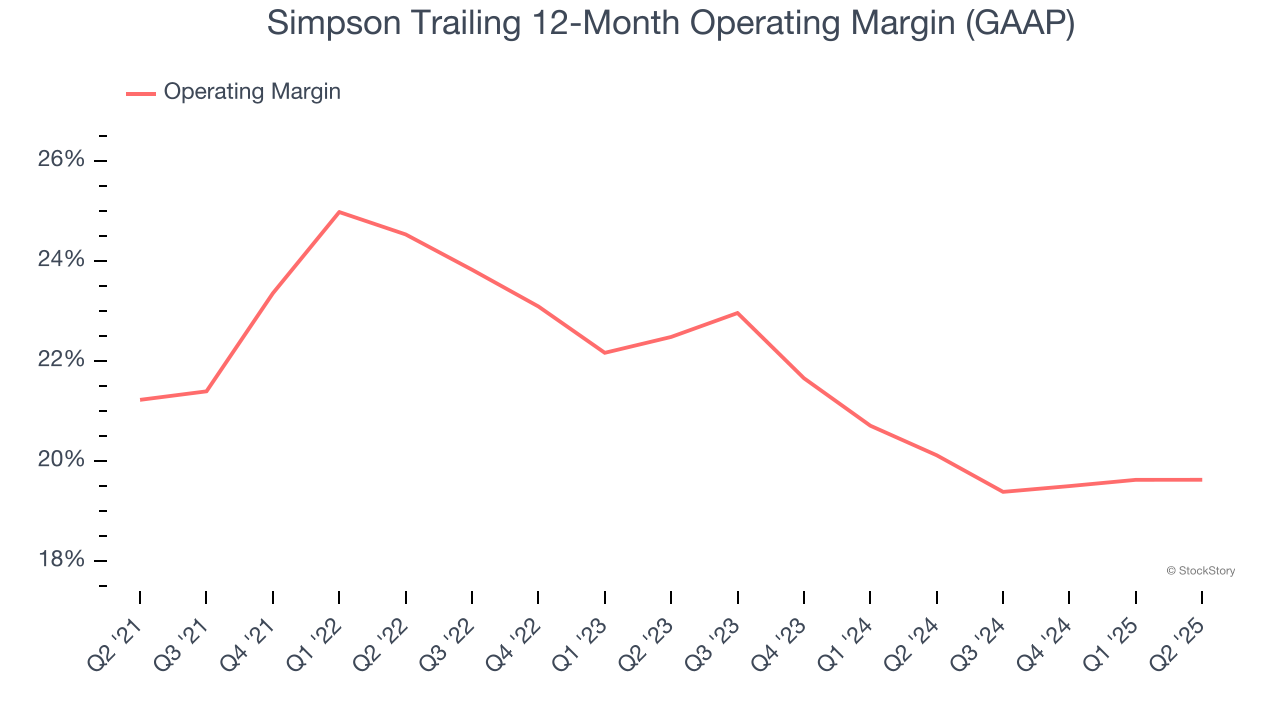
In Q2, Simpson generated an operating margin profit margin of 22.2%, in line with the same quarter last year. This indicates the company’s cost structure has recently been stable.
Earnings Per Share
We track the long-term change in earnings per share (EPS) for the same reason as long-term revenue growth. Compared to revenue, however, EPS highlights whether a company’s growth is profitable.
Simpson’s EPS grew at a spectacular 16.5% compounded annual growth rate over the last five years, higher than its 14% annualized revenue growth. However, this alone doesn’t tell us much about its business quality because its operating margin didn’t improve.
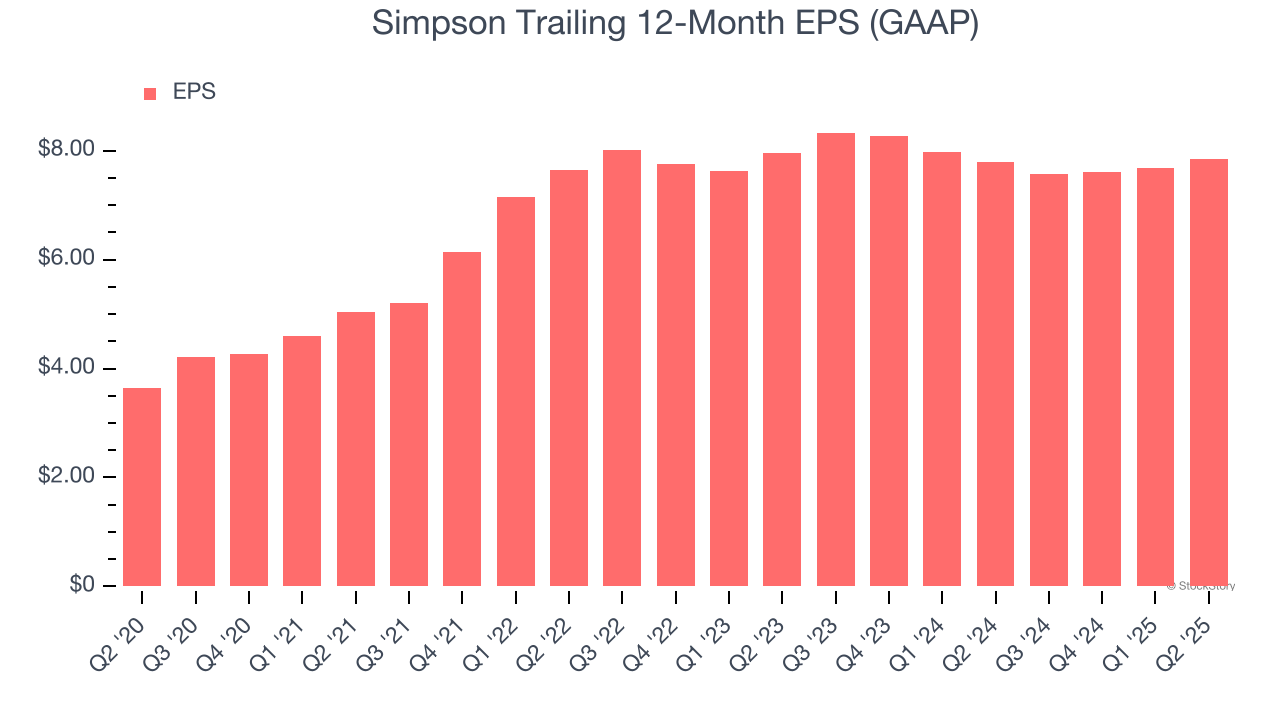
Diving into the nuances of Simpson’s earnings can give us a better understanding of its performance. A five-year view shows that Simpson has repurchased its stock, shrinking its share count by 4.2%. This tells us its EPS outperformed its revenue not because of increased operational efficiency but financial engineering, as buybacks boost per share earnings. 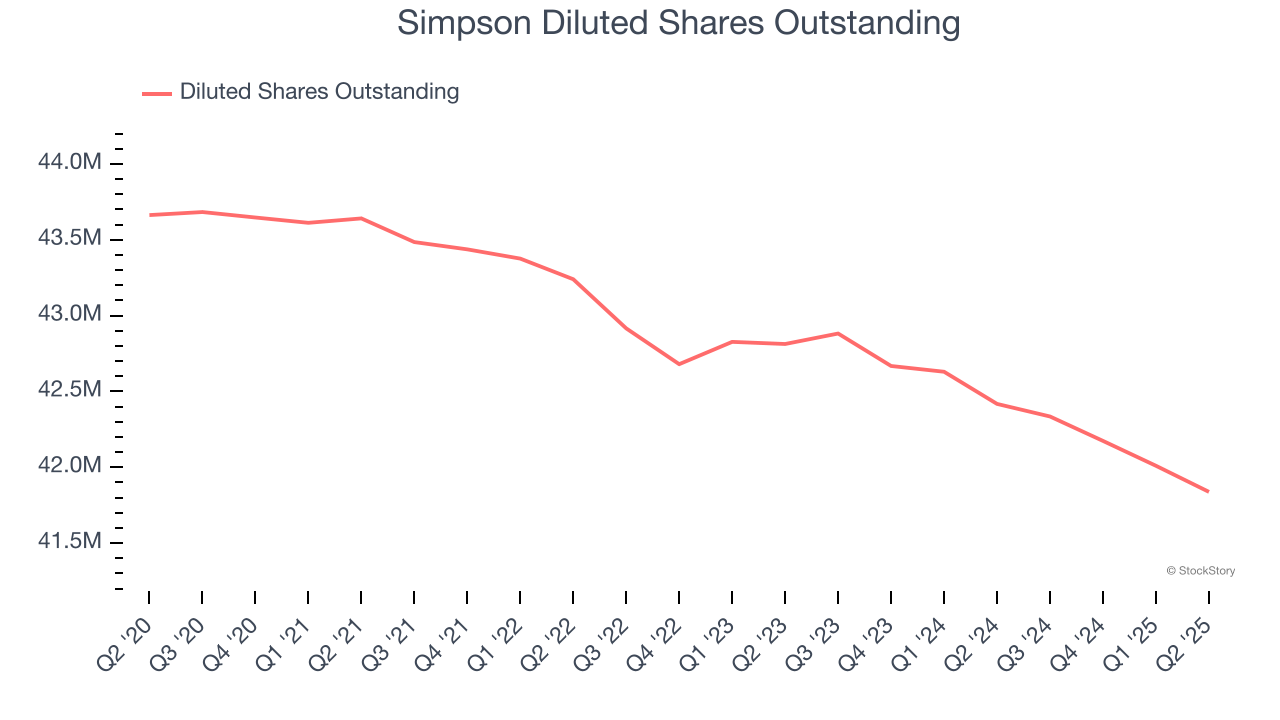
Like with revenue, we analyze EPS over a shorter period to see if we are missing a change in the business.
For Simpson, EPS didn’t budge over the last two years, a regression from its five-year trend. We hope it can revert to earnings growth in the coming years.
In Q2, Simpson reported EPS at $2.47, up from $2.31 in the same quarter last year. This print beat analysts’ estimates by 9.1%. Over the next 12 months, Wall Street expects Simpson’s full-year EPS of $7.84 to grow 8.8%.
Key Takeaways from Simpson’s Q2 Results
We were impressed by how significantly Simpson blew past analysts’ revenue expectations this quarter. We were also glad its EBITDA outperformed Wall Street’s estimates. This all occurred in spite of a challenging housing market. Zooming out, we think this was a good print with some key areas of upside. The stock traded up 2.3% to $170.01 immediately following the results.
Indeed, Simpson had a rock-solid quarterly earnings result, but is this stock a good investment here? If you’re making that decision, you should consider the bigger picture of valuation, business qualities, as well as the latest earnings. We cover that in our actionable full research report which you can read here, it’s free.


